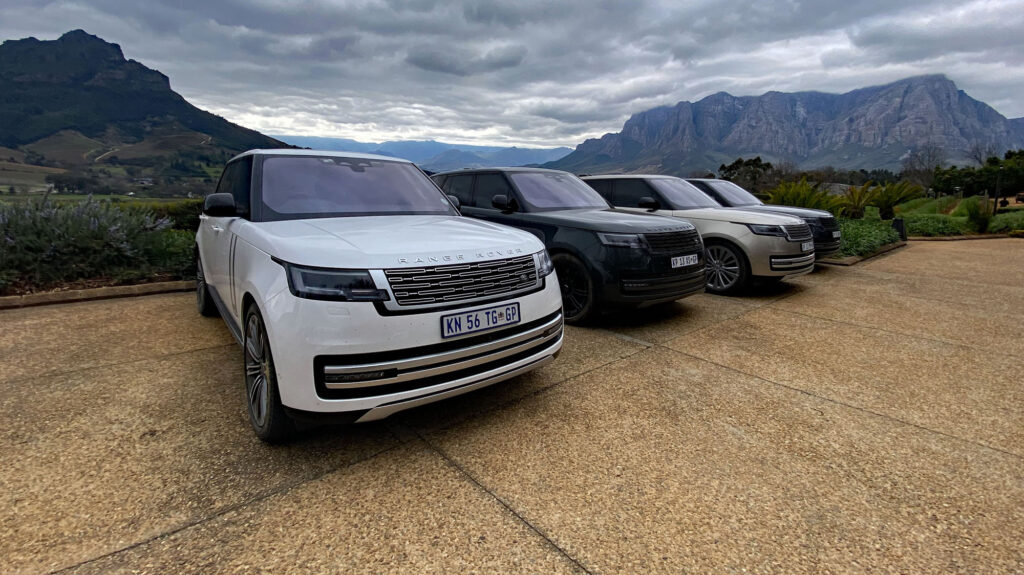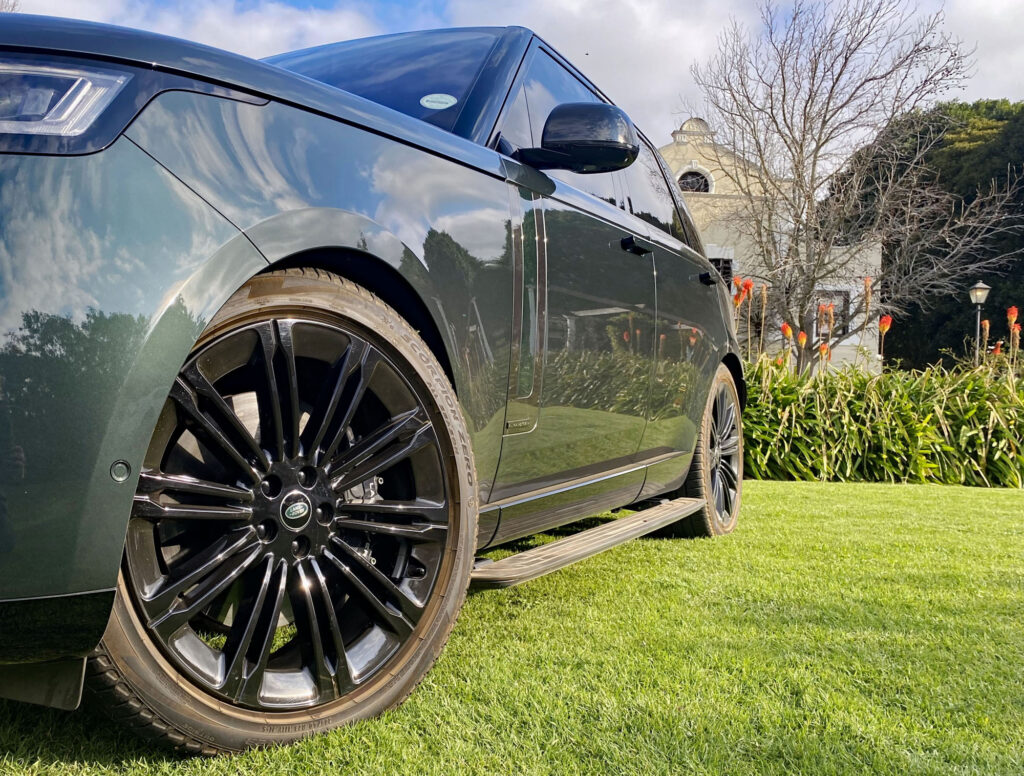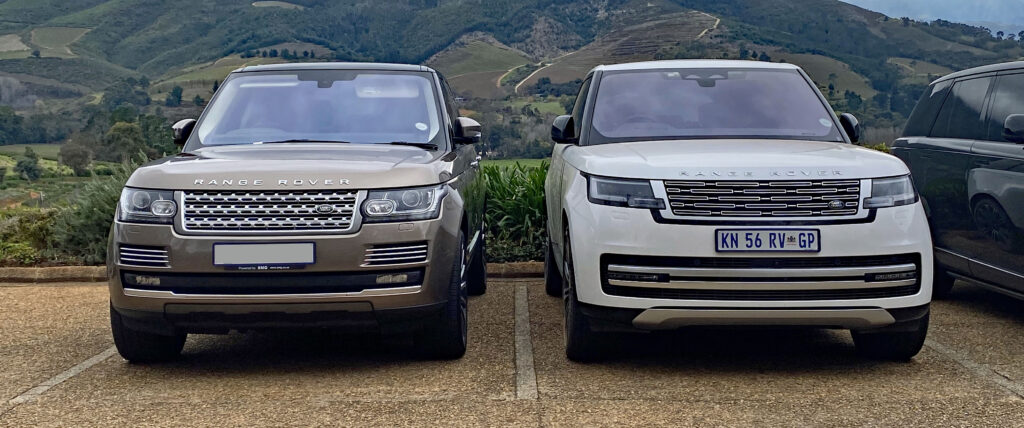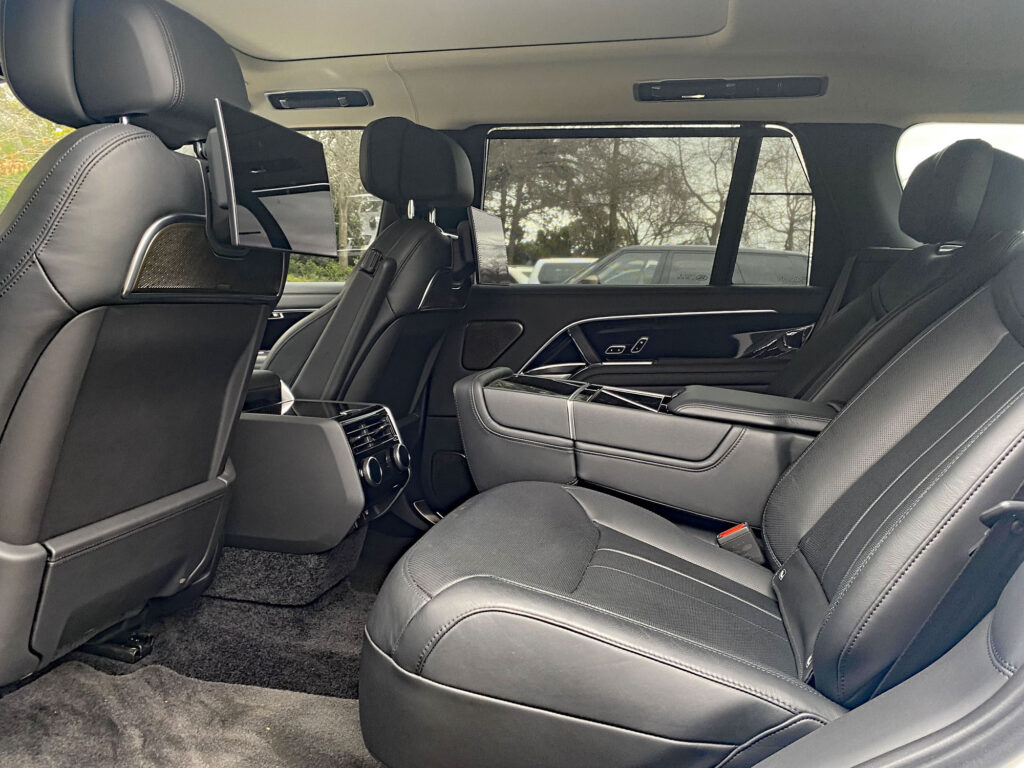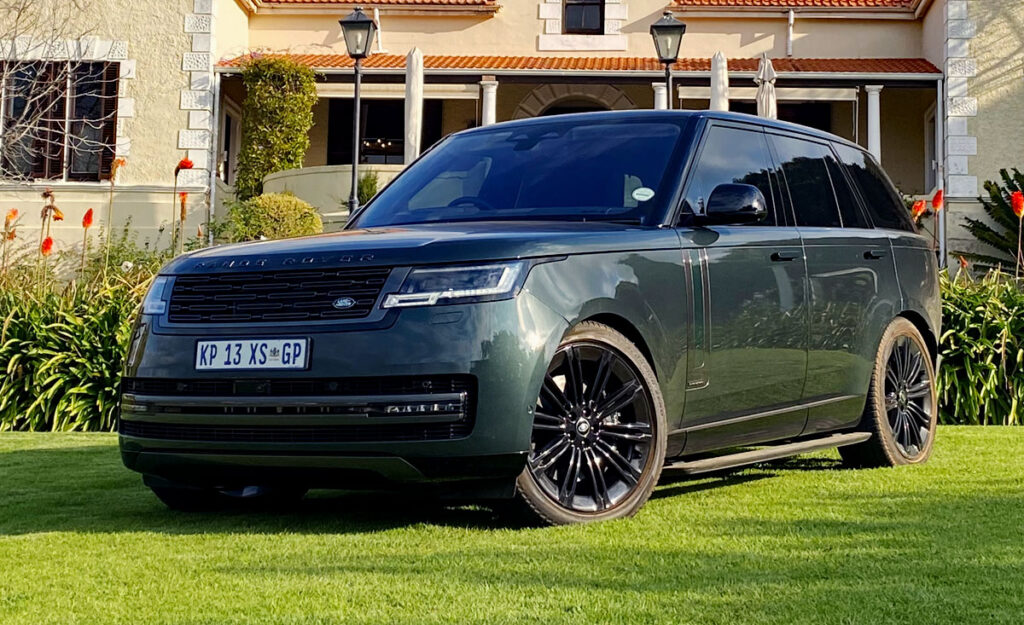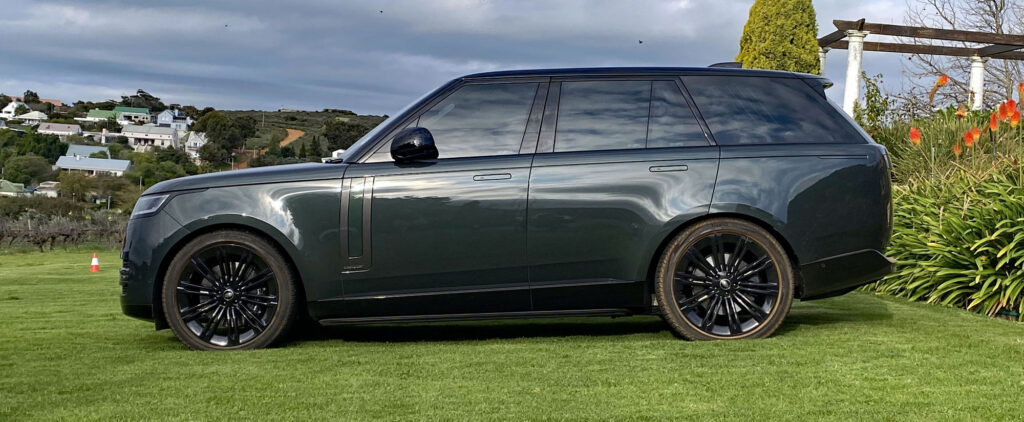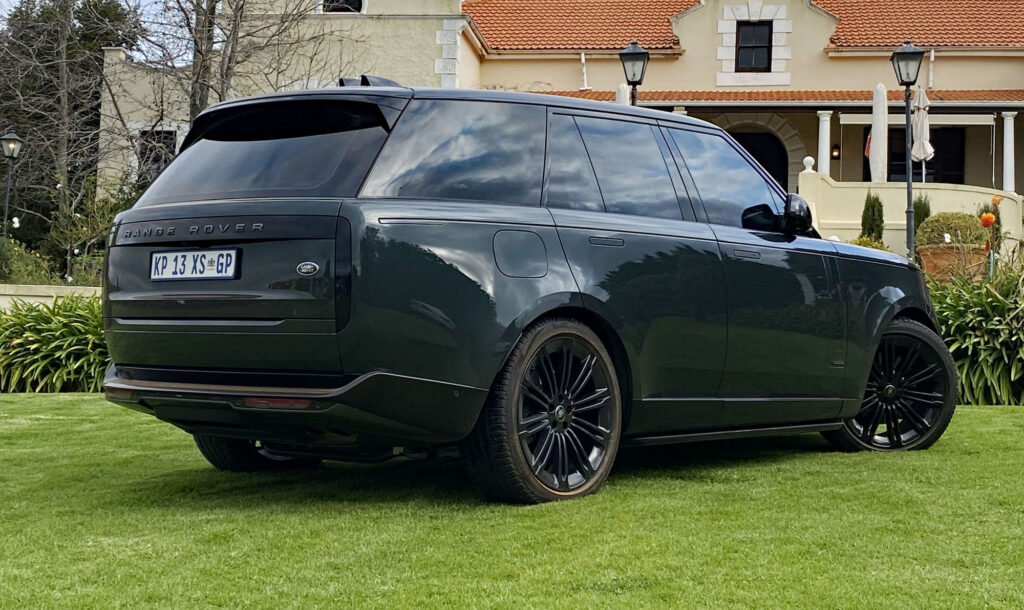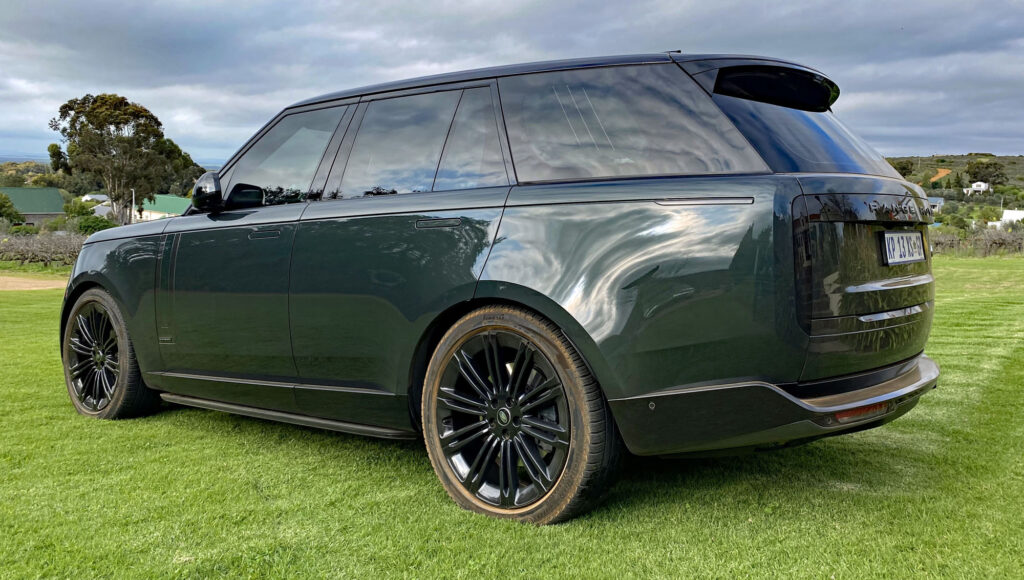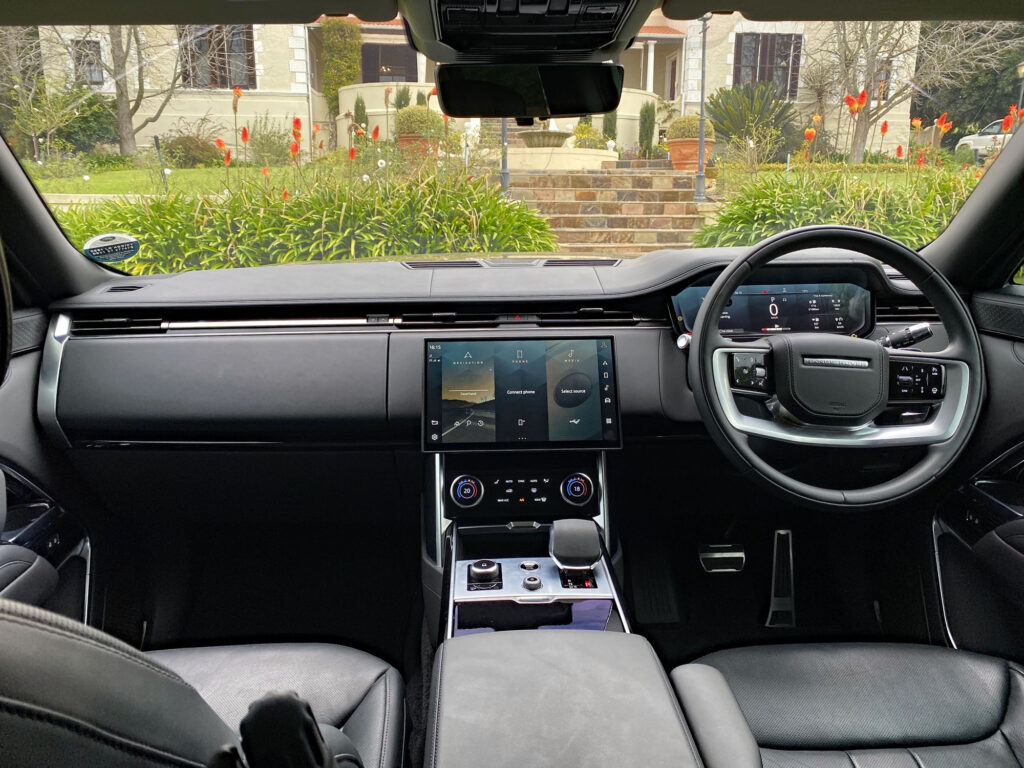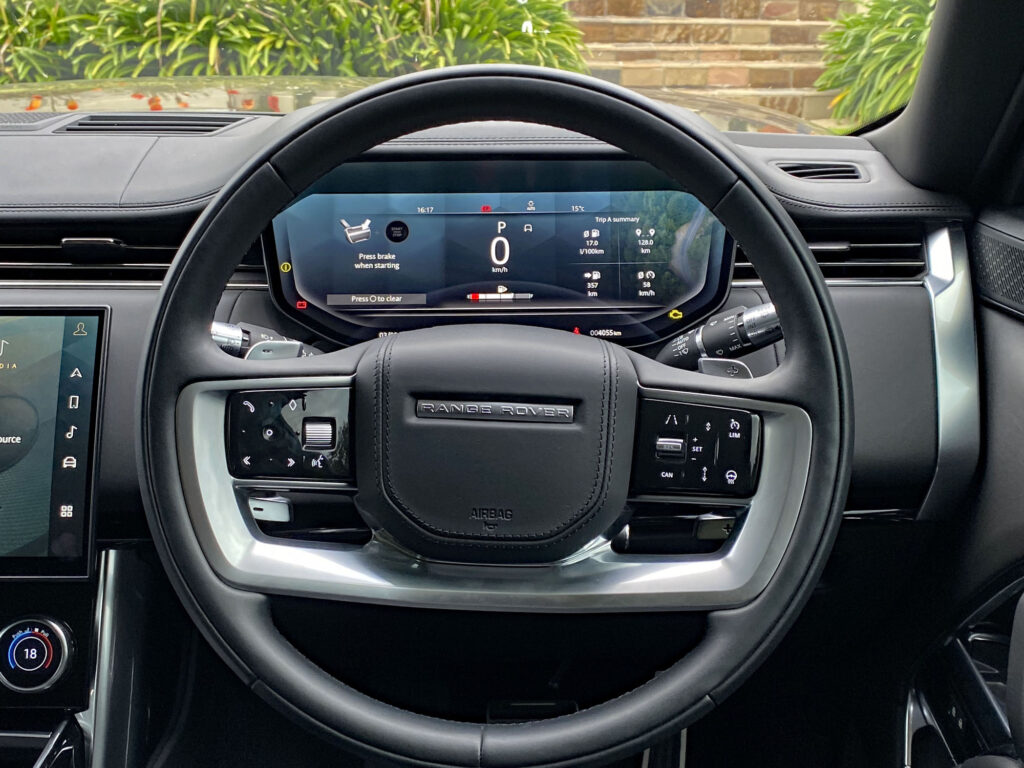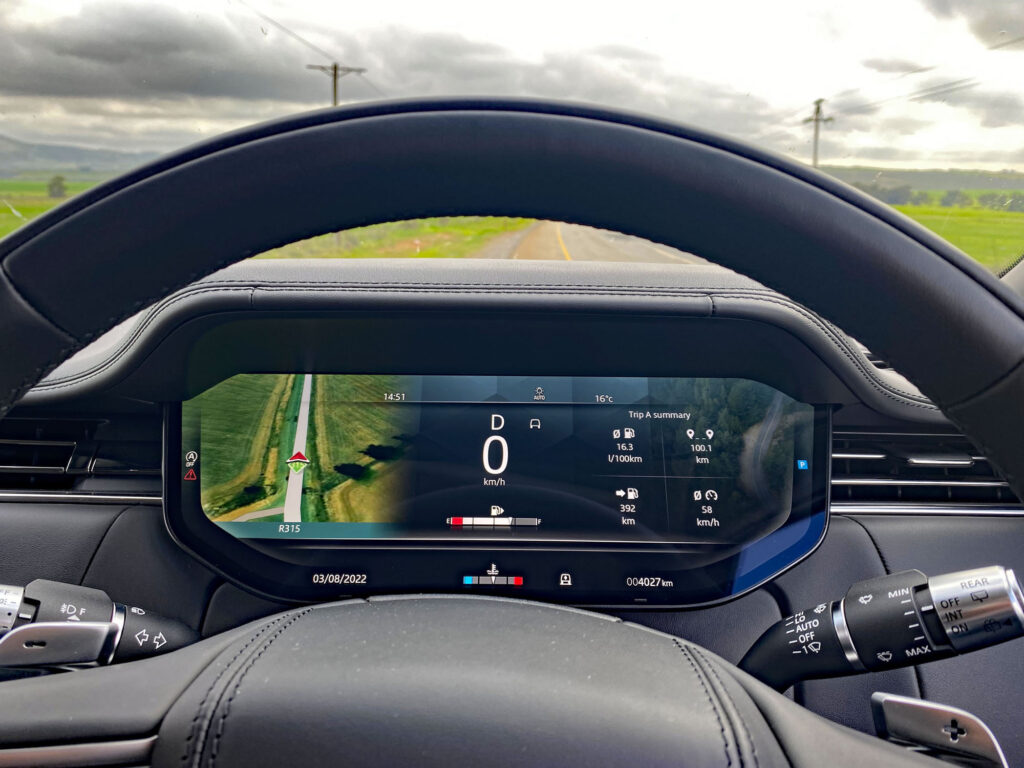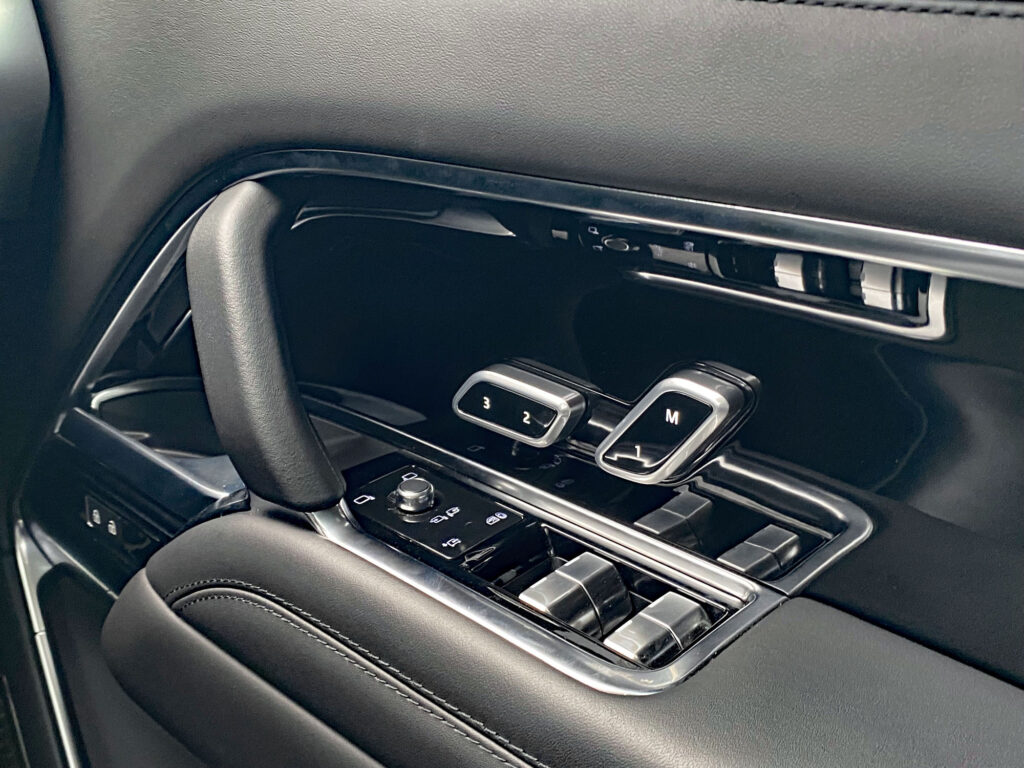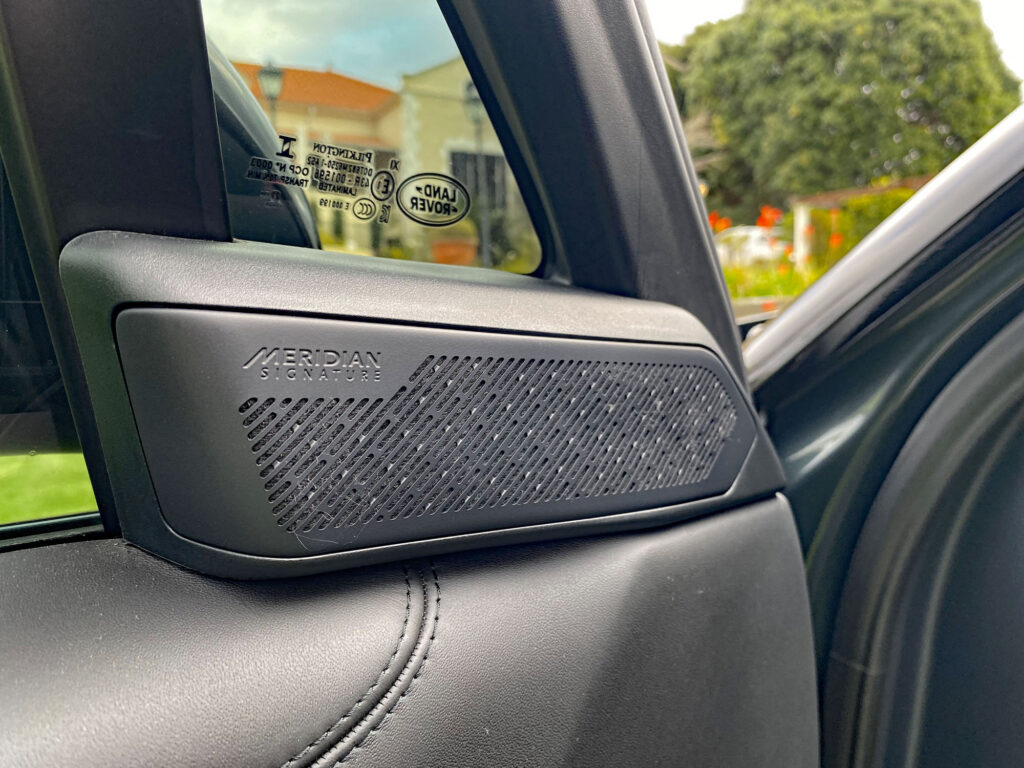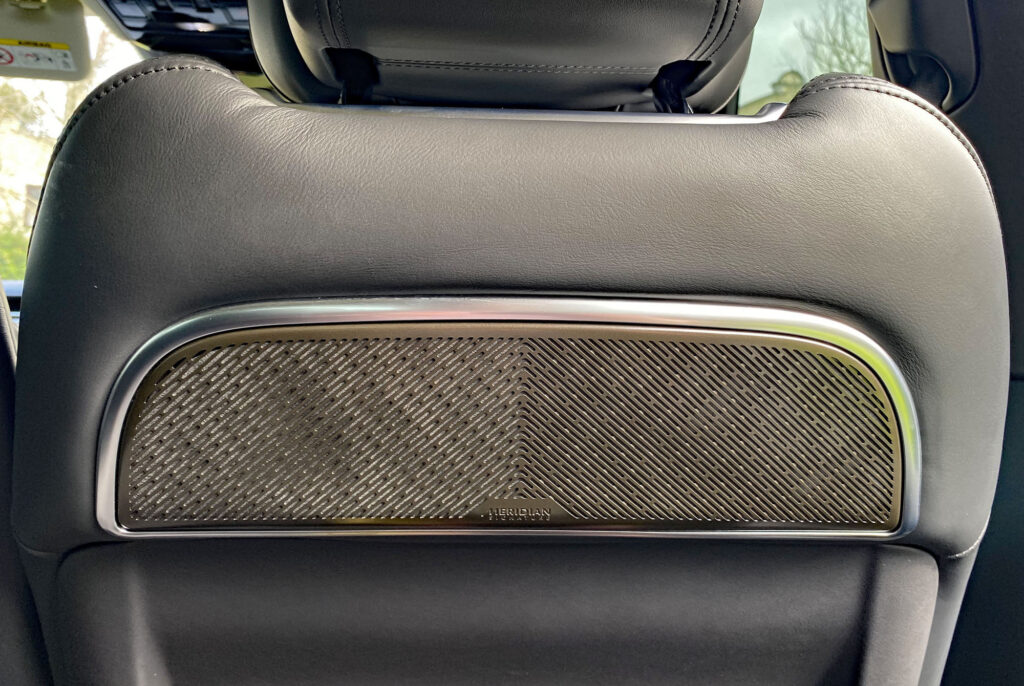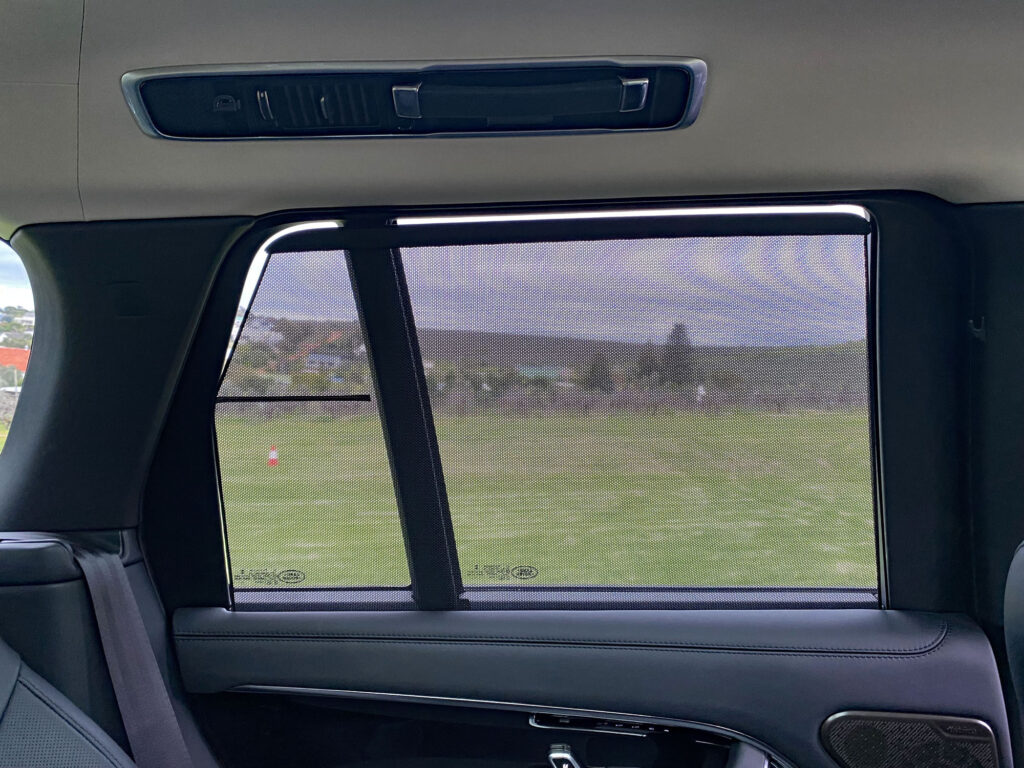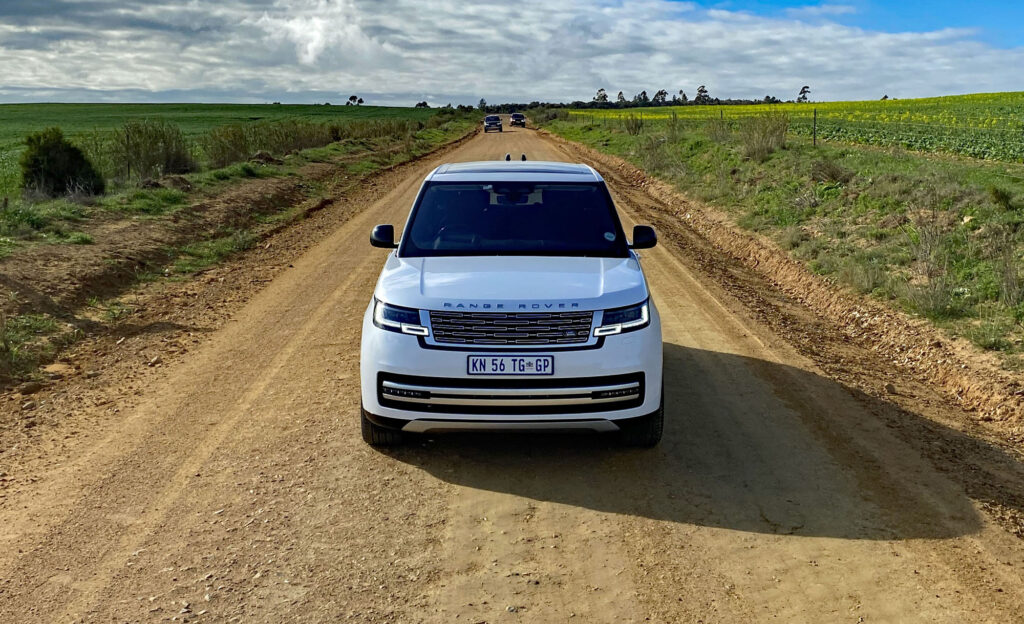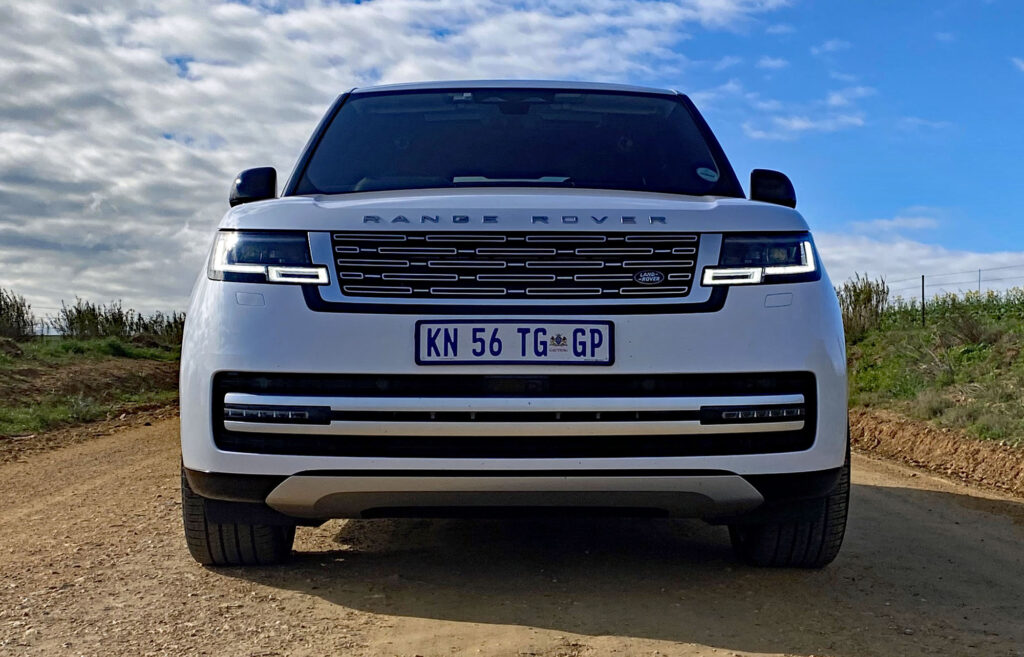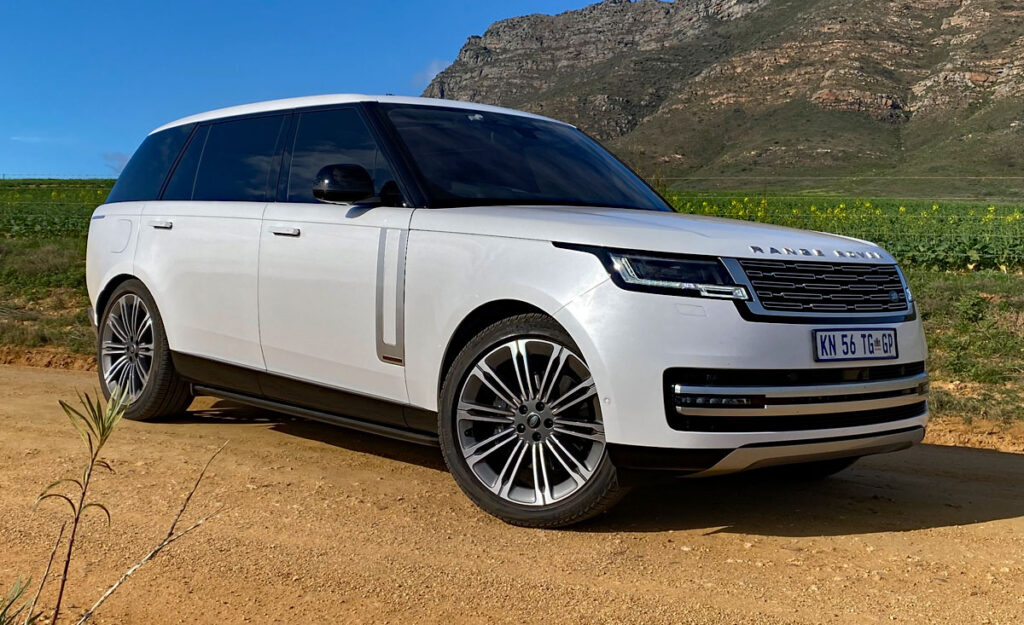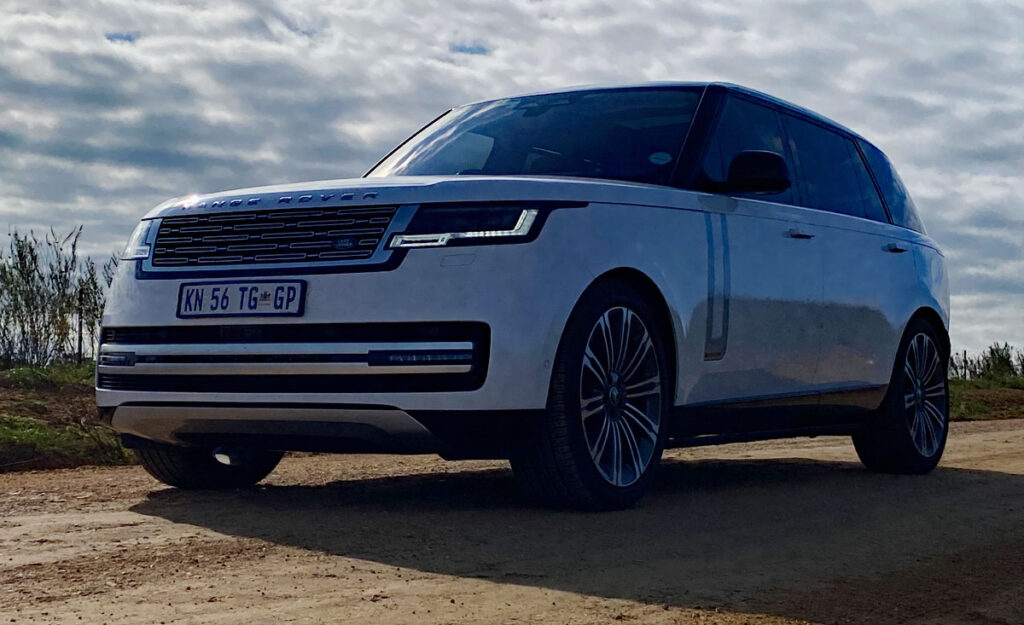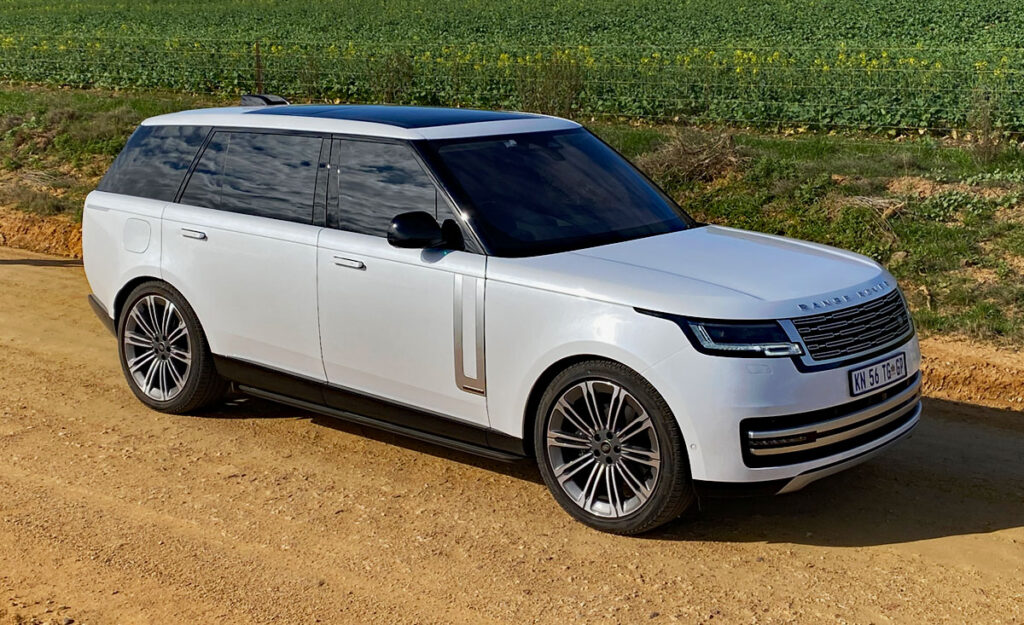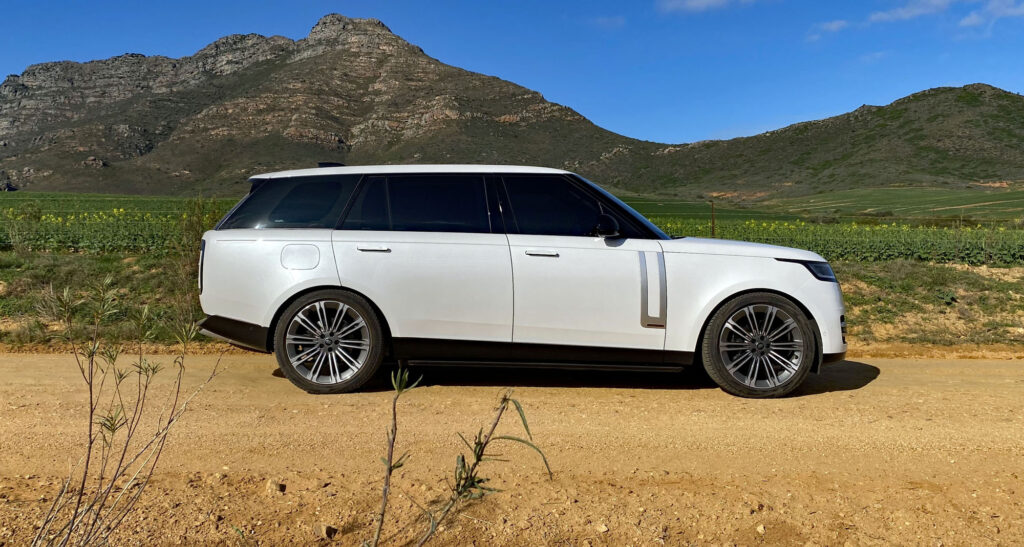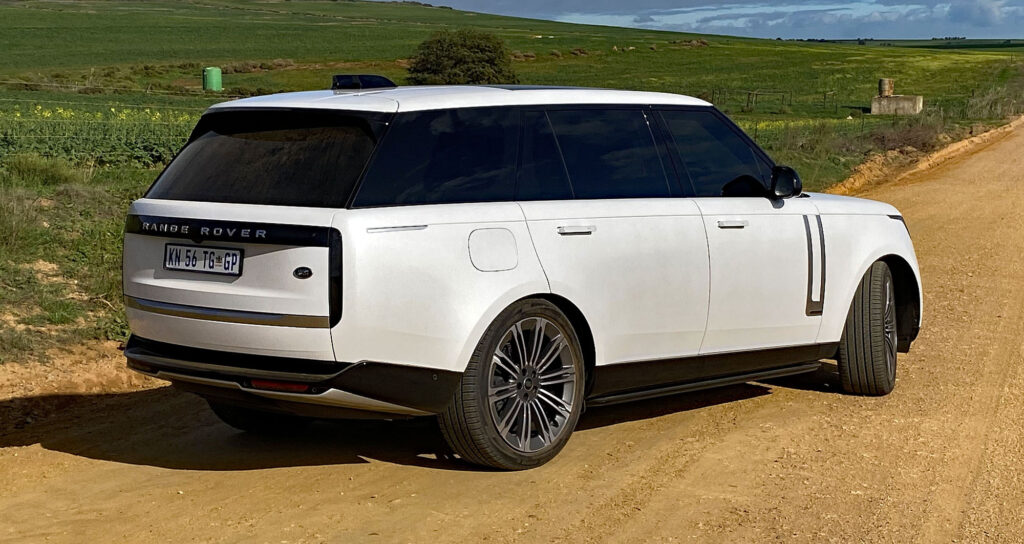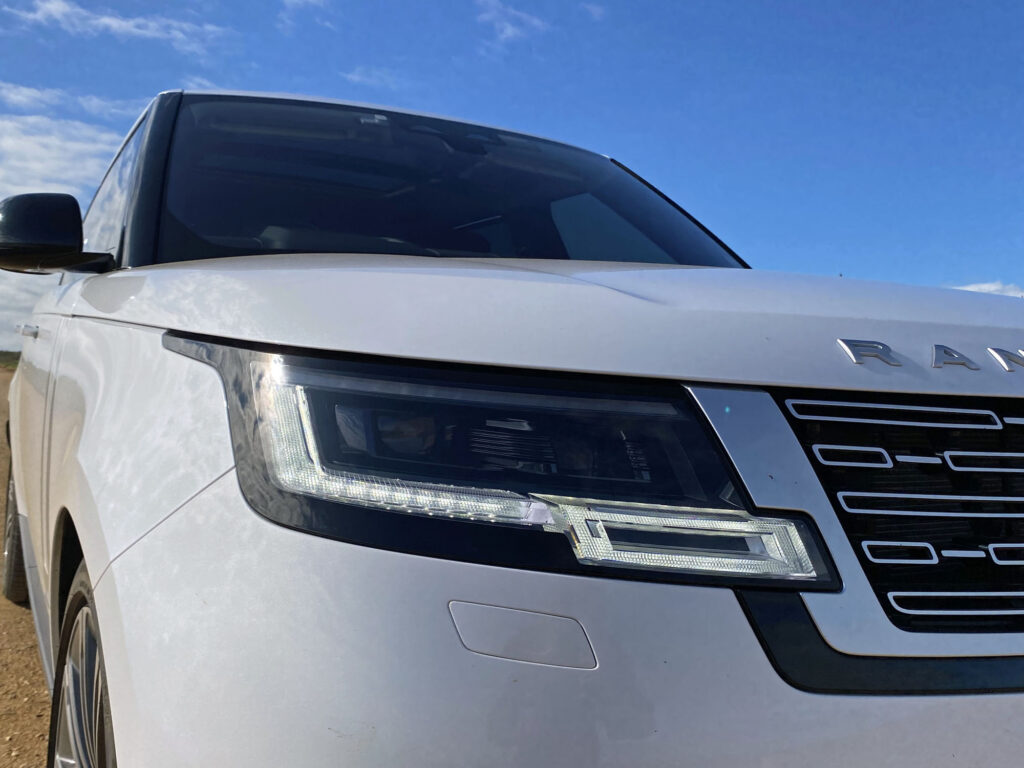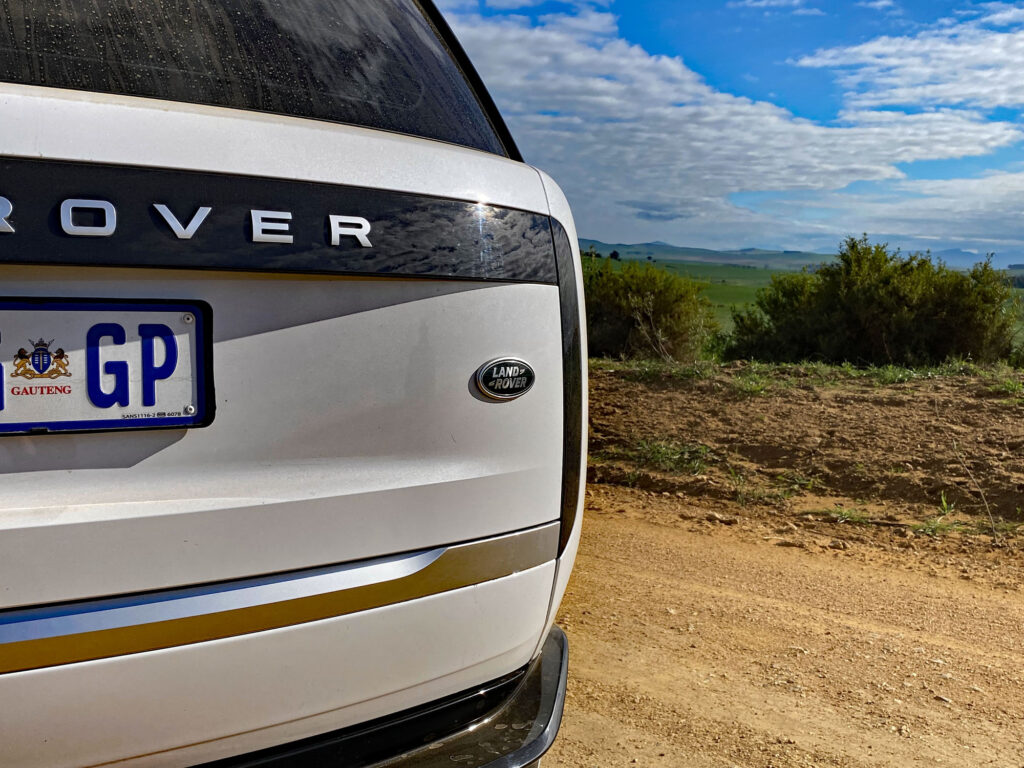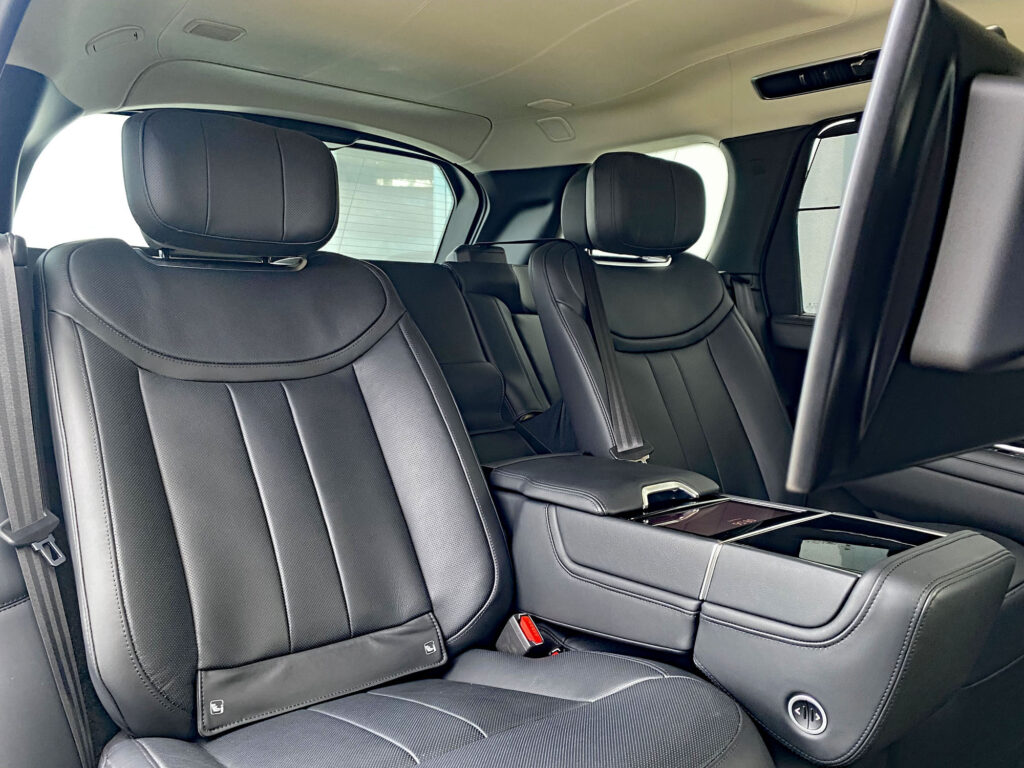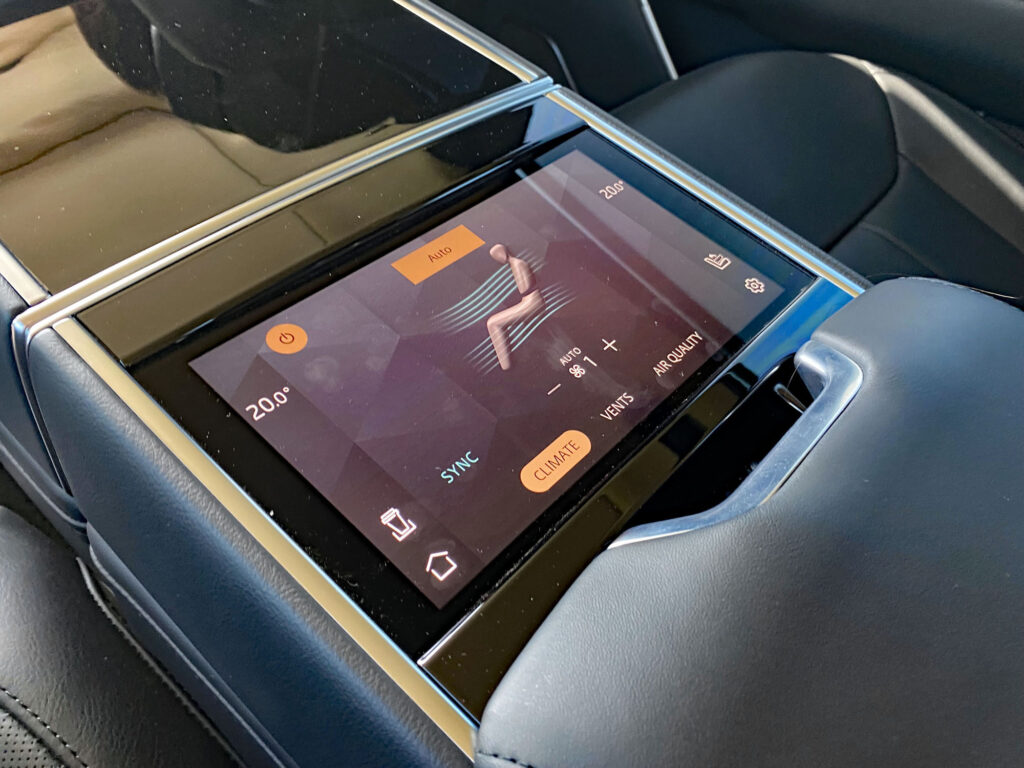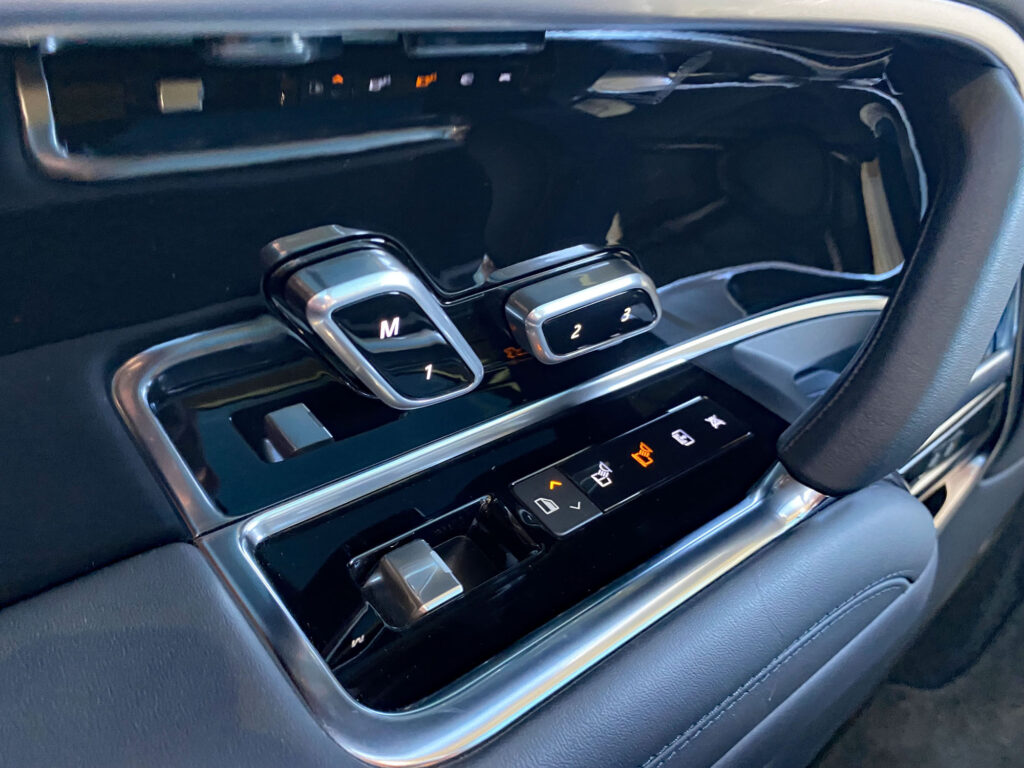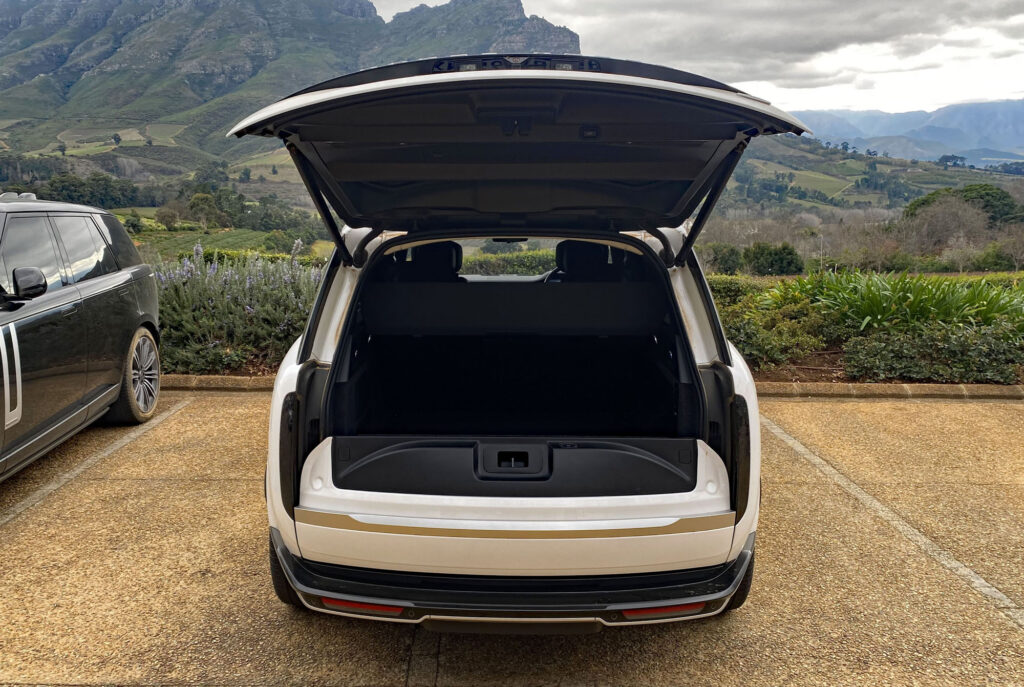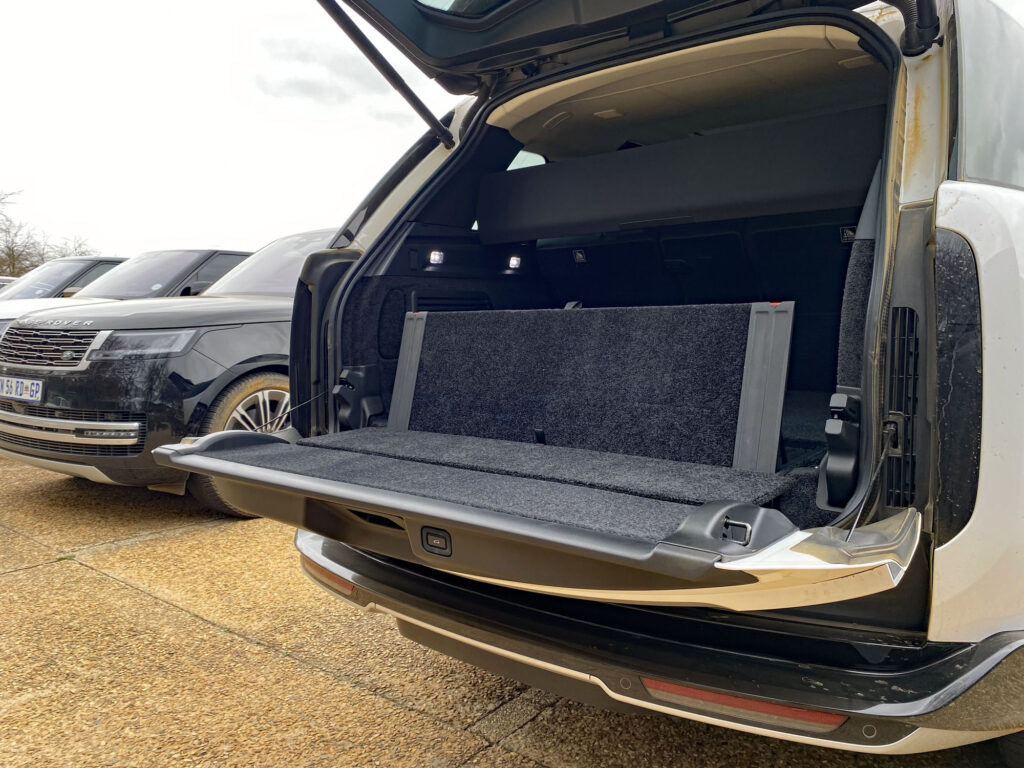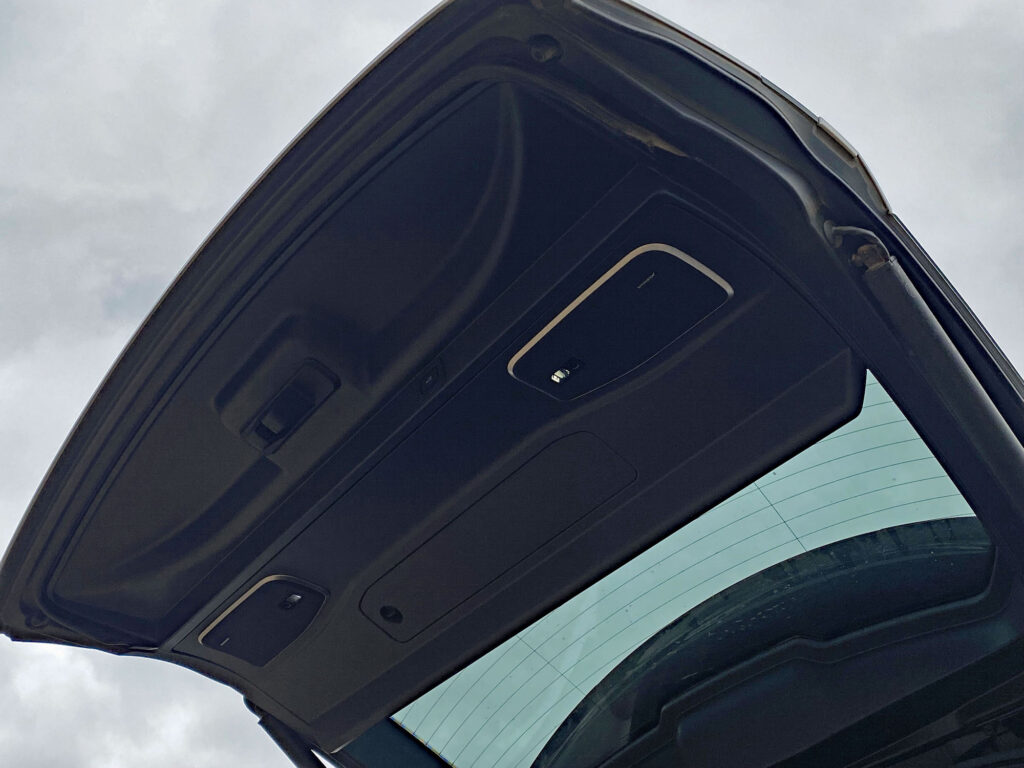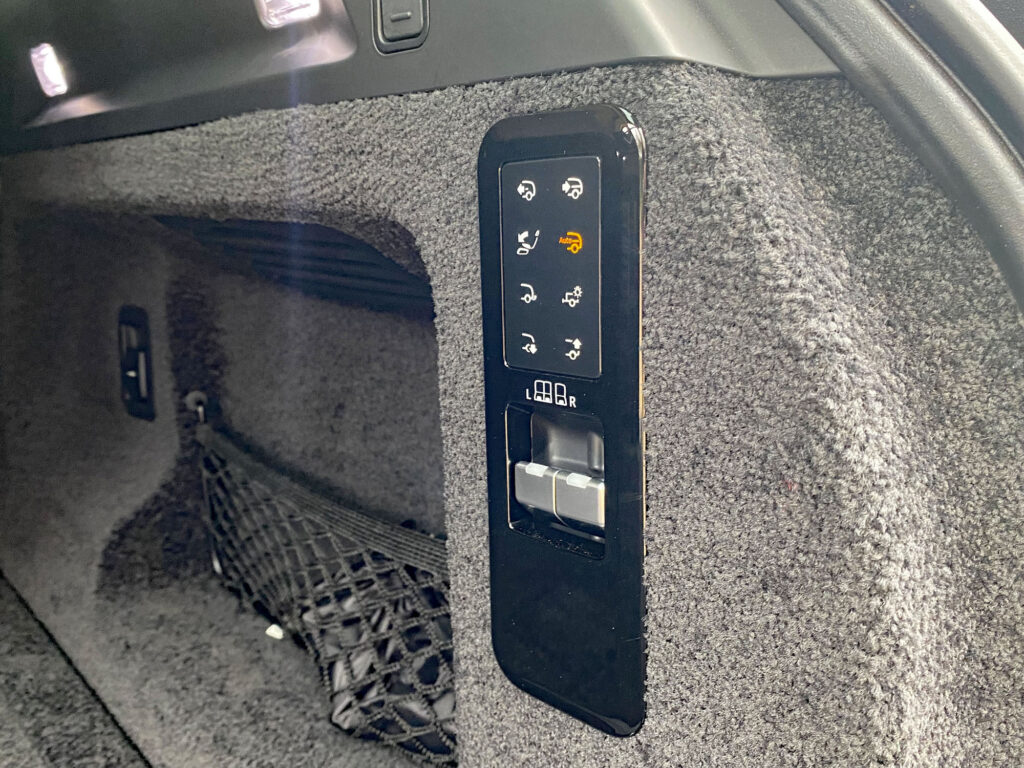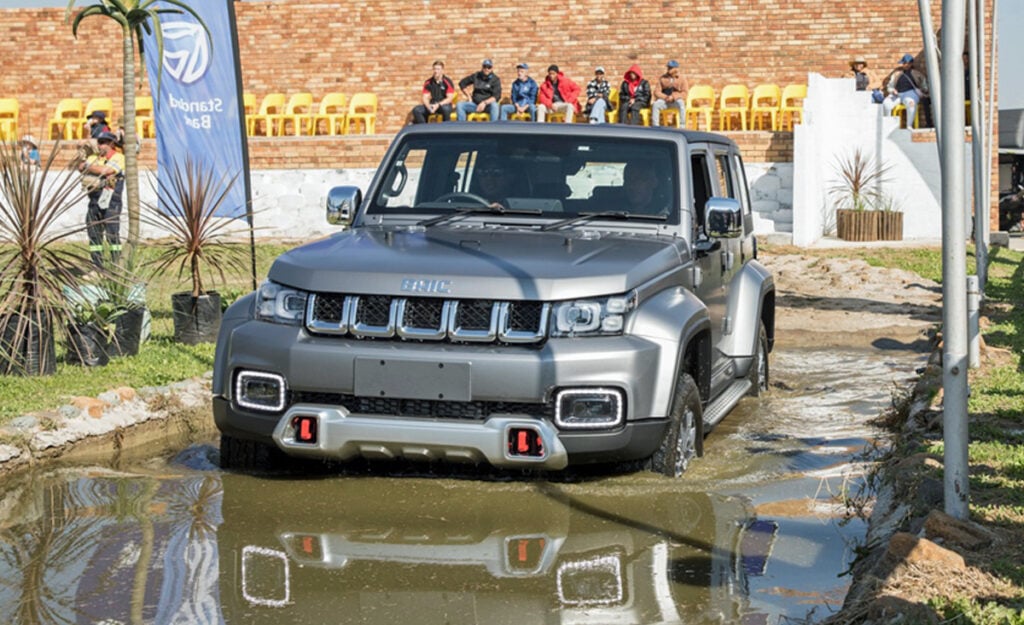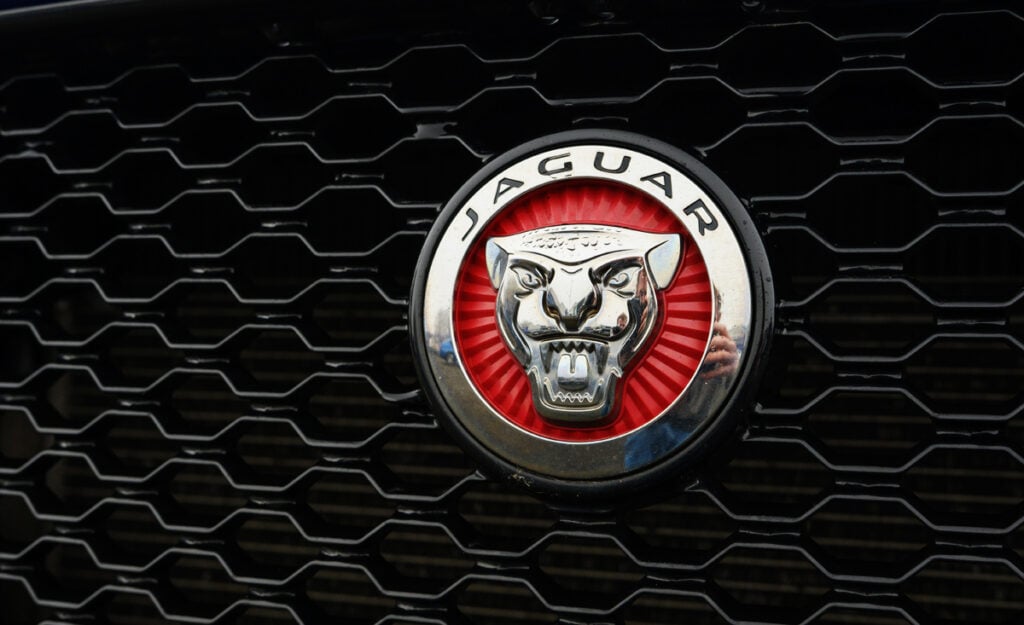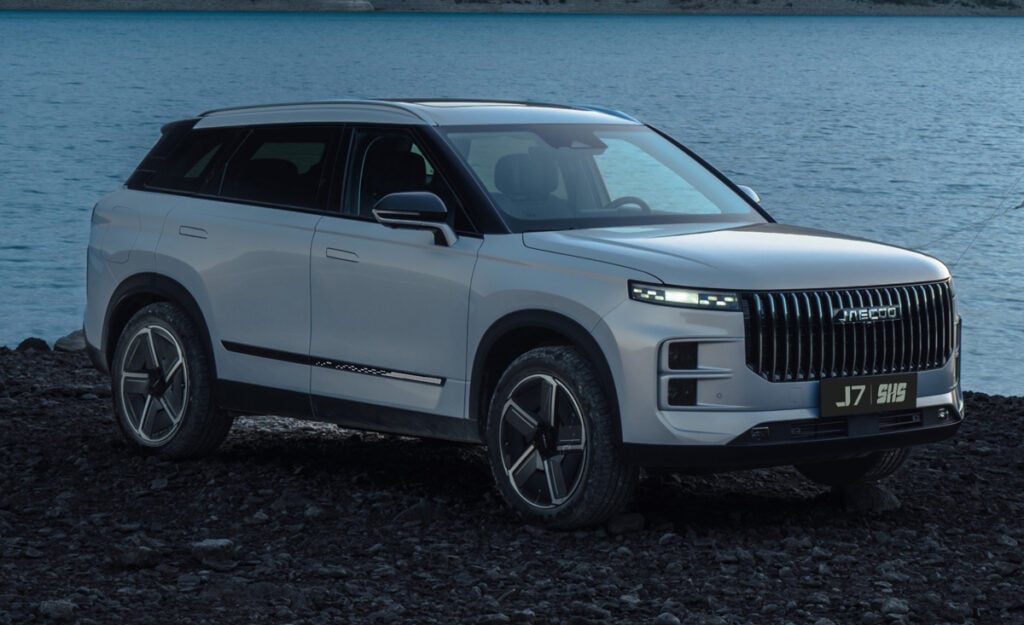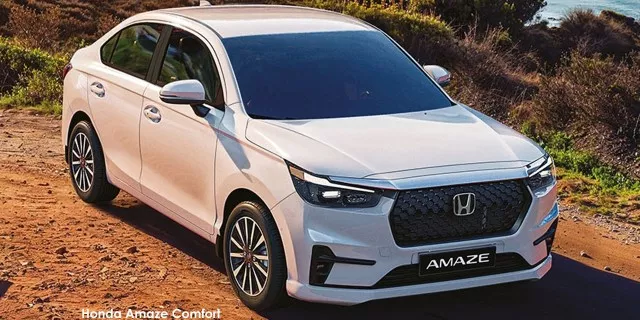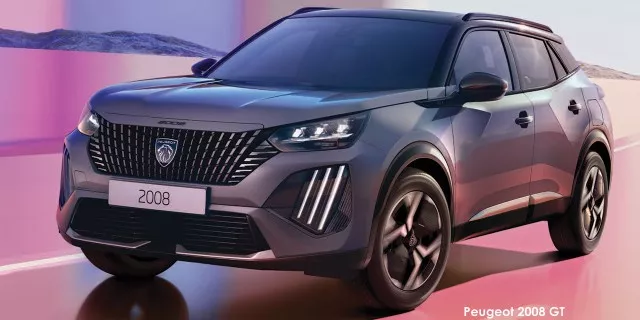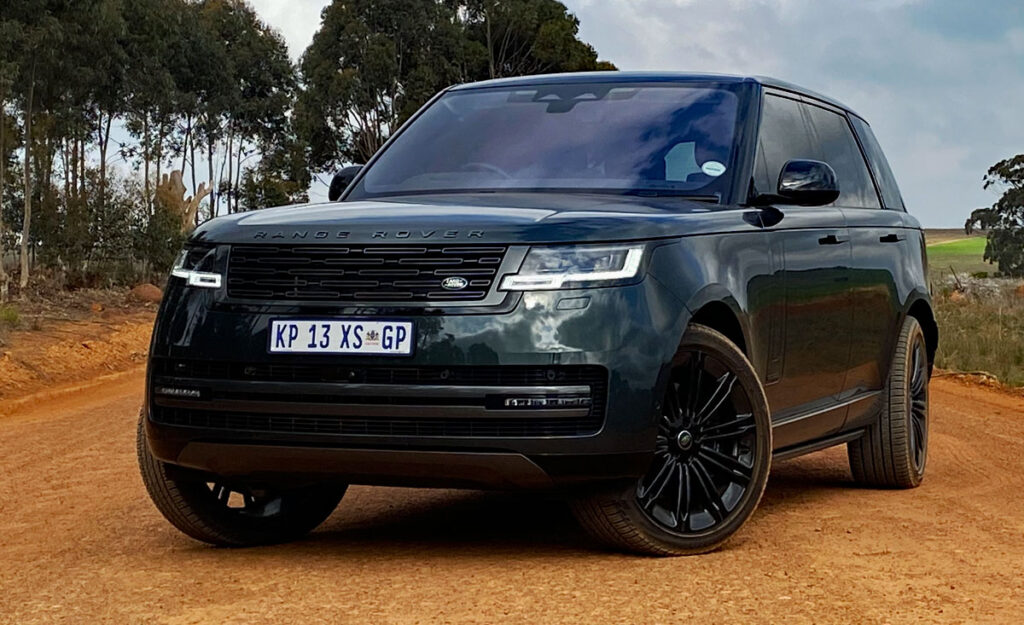
The new Range Rover simply has no competition.
It’s the zenith of luxury, utility, and design – with nothing else quite holding a candle to it.
Oh yes, the new Range Rover was always going to be excellent, but somehow it surpassed even the highest of expectations set for it.
For two days during the past week, we took a standard-wheelbase P530 as well as a long-wheelbase D350 both in Autobiography spec through the picturesque Western Cape on the official South African launch, and fell in love all over again.
Flattest Range Rover ever
The new Range Rover in P530 guise is driven by a 4.4-litre, V8, twin-turbo unit with an immense 390kW and 750Nm permanently directed to all four corners through three electronically-operated diff-locks.
The weight of this enormous land barge is an immense 2.5 tonnes, but you hardly notice it thanks to this being the flattest-cornering Range Rover ever built.
This is, in part, thanks to the clever predictive adaptive air suspension.
The navigation system knows where you are and how the road you are driving on looks ahead, so it calibrates the air suspension before getting there to keep the shoulder line as level as possible and provide steady cornering.
A 0-100km/h time of 4.6 seconds is another element that makes the weight seem negligible, and incredibly confident handling, as well as high-speed stability, is brought by rear-wheel steering by up to seven degrees.
“The rear-wheel steering really comes alive at 10km/h” said a Land Rover spokesperson, and lo and behold when turning this monolithic SUV at low speeds it truly seemed like maneuvering a high-riding hatchback, only smoother.
The sensation of the rear-wheel steering at work is a strange one if you’re not used to it, almost like the back of the SUV has detached from the front while still retaining grip and doing what it’s supposed to do.
With this next-generation foundation and a far more aerodynamic design with a drag coefficient of 0.29 – compared to 0.34 from before – the new Range Rover handles like a vehicle much smaller and lighter than it is, though you are still somewhat aware of its size and heft when you roll around bends at higher speeds.
Despite considerable Brembo brake calipers, you also have to start braking a few metres earlier than what you are probably used to when nearing stop streets.
It’s a shame that few individuals who have the means to buy one will take it seriously off-roading, as the Range Rover remains true to its roots of being one of the most skillful 4x4s in the world.
While we only drove it on roughly 50km of farm roads, it was difficult telling the difference between what was tar and what was dirt.
The comfort levels and handling remain world-leading despite the 23-inch alloys and low-profile tyres, and in the back of your head you know that if you really wanted to climb that mountain in the distance, you’ll can.
When it comes to daily usability, the diesel-powered D350 was definitely the star of the show offering a still-substantial 257kW and 700Nm, getting the SUV up to 100km/h in 6.1 seconds.
It wasn’t the power levels that were surprising, however, but rather the efficiency.
Over the more-or-less 300 kilometres we drove, this engine’s consumption stood anywhere between 9.6-11l/100km, which is remarkable considering the dimensions of the shell around it and all the heavy materials inside.
The best place to be
Open the doors and tasteful luxury of the highest degree is the main theme.
Every panel feels and sounds as solid as an oak, and there’s barely a surface not covered with an ultra-premium material – even the headliner and pillars being wrapped in soft stitched leather.
The thick, sound-deafening carpets may as well have been cut from a black Persian rug, and only the sunshades and panoramic roof cover show a lick of fabric.
Then, it’s time to get in, and the automatically deployed sidesteps make this even easier, coming in handy more than one might expect due to the wide doorways and substantial ground clearance.
You get chills passing through the gaping sides as it doesn’t feel like you deserve to be in the Range Rover, but it puts you at ease quickly.
With hands wrapped around a thick leather steering wheel and among the best seats in the world below you – heated, ventilated, and massaging of course – this SUV instills a sense of confidence and driving pleasure that few others do.
It’s one of the quietest car cabins out there, too, thanks to active noise cancellation built into the headrests.
This system makes use of microphones in the wheel wells which measure road and ambient noise and play the opposite notes directly into your ears, thereby canceling out annoyances from outside.
But the best place to be, as you might have expected, is the backseat.
The models we were in featured reclining rear seats and if there is no one sitting in the front left, this seat will move all the way forward and fold down allowing you to stretch out as far as you want at the back.
A tablet is hidden in the backrest of the rear middle seat and folds out at the push of a button, providing cupholders and controls for ambient lighting, the panoramic roof, climate control, and seat heating and ventilation – yes, in the back, too.
If the middle seat is in use, there are still buttons on the door giving the rear passengers access to a reading light, a workstation light, infotainment volume control, and sunshade and rear window operation.
Even more impressive is that with the all-encompassing 35-speaker Meridian stereo seeing units in the headrests, the music and navigation instructions sound like they’re playing inside your head rather than in the cabin.
The old cliche of “like you’re riding on a cloud” doesn’t do the Range Rover’s comfort justice.
It’s more accurately described as leather-clad ecstacy on four wheels, and you’ll want to sell everything you own just to enjoy it for a few minutes longer.
Begrudgingly climbing out and closing the heavy doors is also made effortless with the standard soft-close feature that sucks them closed if they didn’t latch the first time.
Land Rover said there’s a substantial waitlist for its new flagship – and it’s not hard to see why.
Even starting at R2,962,332 in South Africa the Range Rover doesn’t seem overpriced, and you only need to sit in it once to believe it.
You can certainly find SUVs with more imposing price tags, but they can’t compete with the heritage, status, and luxury combined into one Range Rover.
